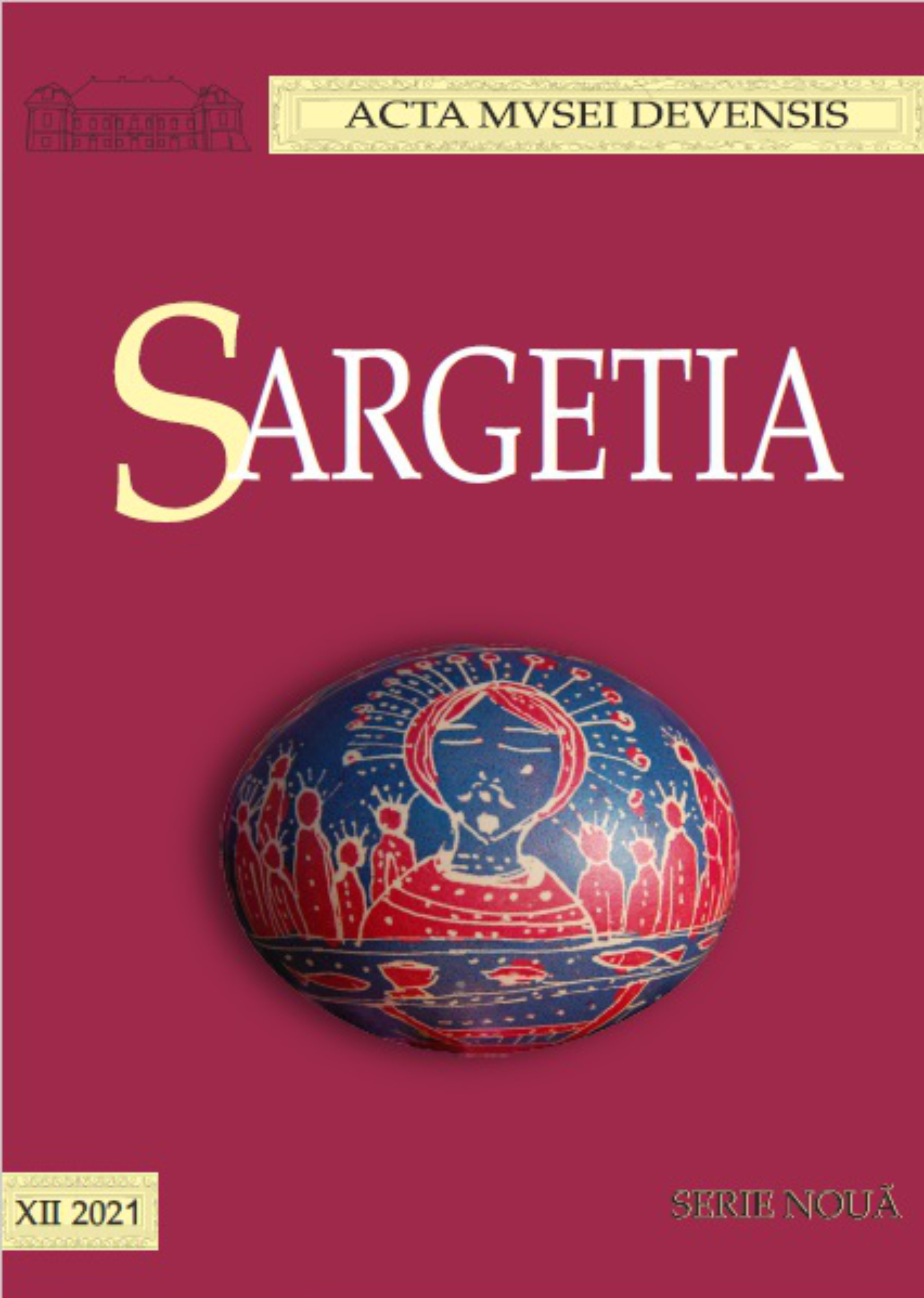A bea pentru a trăi sau pentru a muri? Reflecţii asupra unei scene controversate de pe columna lui Traian
Drinking to Live or to Die? Reflections on a Controversial Scene from the Column of Trajan
Author(s): Ştefan VasilacheSubject(s): History, Archaeology, Ancient World
Published by: Editura Altip
Keywords: column; Trajan; Sarmizegetusa; water; suicide;
Summary/Abstract: The paper discusses the interpretation of an important scene from the Column of Trajan, namely scene CXXI (Pl. V/2). This scene, part of a larger whole (Scenes CXIX-CXXII; Pl. V/1-3), was interpreted by most researchers as representing the group suicide of the Dacians during the siege of their most important fortress, identified by historians with Sarmizegetusa Regia and placed by archaeologists at Grădiştea de Munte in the Orăştie Mountains. Although not the first one to consider its meaning as different, Constantin and Hadrian Daicoviciu popularized, through their 1965 booklet regarding Trajan’s Column, the interpretation that the scene is rather representing the distribution of the last water reserves by the under-siege Dacians. In order to reanalyze the meaning of this scene, the article starts by presenting the most important representations on the Column in relation to Dacian fortifications, during the last campaign of Emperor Trajan. After the embarkment of the Romans at Brundisium (Scene LXXIX; Pl. I/1) and the passing of the Danube at Drobeta (Scenes XCVIII-XCIX; Pl. I/2), the Romans first encounter a Dacian fortification in scene CXI (Pl. II/1), where they defeat a group of Dacians. In the next scene, CXII (Pl. II/1), the Romans leave a camp to start a siege visible in the next three scenes (CXIII-CXVI; Pl. III/1-4). After they win this decisive battle, we can see, in the next scenes, how they continue to prepare siegeworks (scene CXVII; Pl. IV/1), while in the next scene a Dacian embassy asks for mercy, being declined (CXVIII; Pl. IV/2). Next four scenes (CXIX-CXXII; Pl. V/1-3) are actually the ones which contain the problematic scene (CXXI; Pl. V/2). Here we can see only Dacians, inside a fortification, firstly burning their own buildings on the outskirts of the fortification (CXIX; Pl. V/1), while afterwards we can see them inside the main precinct of the fortification, drinking some kind of liquid from a vessel. After this some of them die, while others, looking back at the scene, are running out of the fortification (CXXII; Pl. V/3). While describing these scenes I have put much emphasis on the architecture associated with these Dacian fortifications. Some ideas, proposed mainly by E. Thill through her work in this direction, seem to indicate that these fortifications contain the biggest concentration of Dacian structures on all the column, while, at the same time, they show a character closer to the representations we find, usually, in Roman urban associated contexts. The discussion can be expanded in the sense that these fortifications represented in the mentioned scenes (CXI, CXIII-CXVI and CXIX-CXXII, plus the one in scene CXXIV-CXXV; Pl. VI/1) could actually represent the same fortification, although this is not a certainty. At the same time, the scenes from the end of the first war (LXXIV-LXXV; Pl. VI/2-3) could be related, in a wider view, both through the complexity of the Dacian fortification represented and through the fact that, actually, a unique architectural feature is represented on scene LXXIV, a rock-cut channel filled with water. In the next part of the paper the interpretation for the scene, proposed by C. and H. Daicoviciu, has been followed more carefully, while some archaeological, geographical and hydrographical aspects (Pl. VII/1-3) tried to confer it a more localized context. In this context I try to put forward my own conclusions. Afterwards, an ancillary aspect is discussed, posed by the association of a vessel with inscription found at Buridava by D. Berciu with the vessel in the CXXI scene, discussion which has led me to the approach of the vessel with the Decebalus Per Scorilo stamp found at Grădiştea de Munte in a context relatable to the Daco-Roman wars (Pl. VIII/1-2).
Journal: Sargetia. Acta Musei Devensis
- Issue Year: 2021
- Issue No: 12
- Page Range: 27-50
- Page Count: 24
- Language: Romanian

